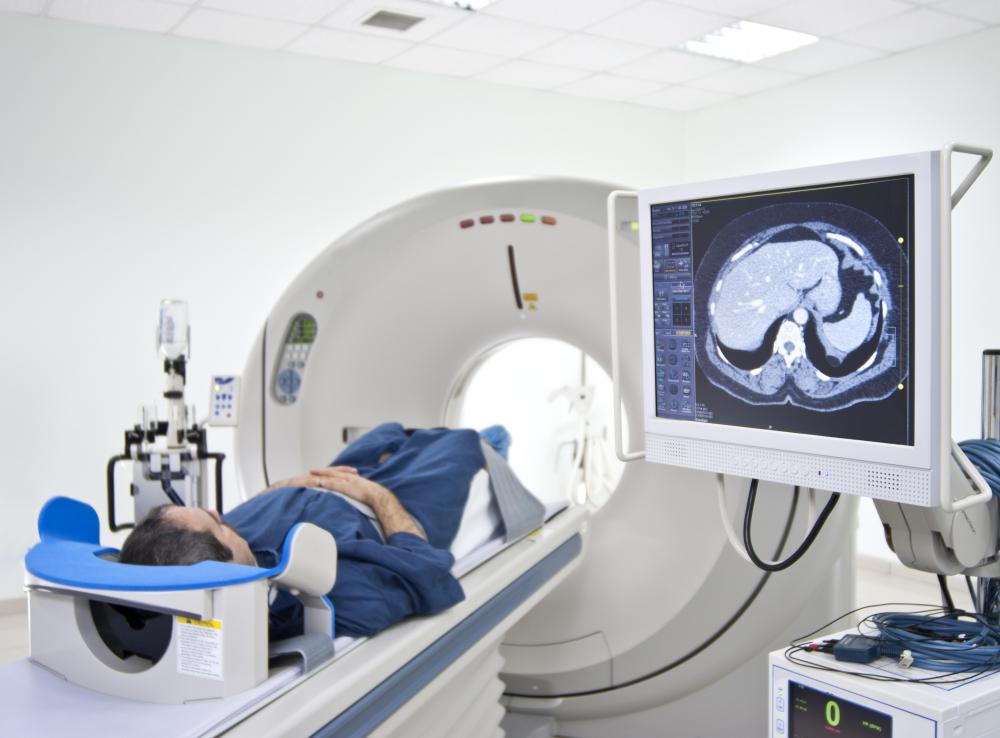At WiseGEEK, we're committed to delivering accurate, trustworthy information. Our expert-authored content is rigorously fact-checked and sourced from credible authorities. Discover how we uphold the highest standards in providing you with reliable knowledge.
What Is a Nanodiamond?
The nanodiamond, also sometimes called a detonation nanodiamond (DND) or ultradispersed diamond (UDD), is produced as the result of a carefully controlled explosion. Nanodiamonds are usually extracted from the explosion's resulting soot through the use of pressure, heat, and acid. Alternately, nanodiamonds can also be produced using graphite-based processes. These tiny diamonds are used in industrial applications involving a wide range of products. Beginning in the late 20th century, research in medical applications revealed that nanodiamonds are effective agents for both delivering and monitoring chemotherapy drugs.
In order to manufacture nanodiamonds, carbon is subjected to the detonation of a TNT and RDX mixture, two powerful explosives, resulting in the production of a sooty material containing nanodiamonds of about 5 nanometers (nm). The vessel containing the explosion is rapidly cooled using compressed carbon dioxide, water, or air, as faster cooling produces a larger diamond yield. The diamond-laden soot is then placed in an autoclave and boiled in acid under high pressure to remove almost all of the impurities such as the contaminating metals from the explosion vessel as well as lower-grade carbon incapable of producing diamonds. Nanodiamonds can also be synthesized using graphite in suspension that is either subjected to ultrasonic cavitation or a pulsating laser beam.

Nanodiamonds possess a very large surface area relative to their size so that hydrocarbon and water molecules attach readily to them. The nanodiamond particles also tend to cluster and adhere to each other strongly. These characteristics make handling them challenging while also giving them many potential industrial and medical applications. Industrially, the nanodiamond is used in dry lubricants, reinforcement for plastics and rubber, and polishing, as well as lapping processes and as an additive to motor oils.

A group of researchers at Northwestern University in Evanston, Illinois, have demonstrated that nanodiamonds offer great medical potential when used in conjunction with anti-cancer chemotherapy drugs. Due to their purity, the diamonds are not attacked by the immune system while binding strongly to molecules containing medicines, thus overcoming the tendency of tumors to resist medicines. Due to its tiny size, the nanodiamond is easily flushed by the urinary tract following chemotherapy treatments. Tests on laboratory mice with drug-resistant cancers have demonstrated that drugs delivered with nanodiamonds remain in the bloodstream more than ten times longer, producing substantially enhanced tumor shrinkage. By adding contrast agents to nanodiamonds and using magnetic resonance imaging (MRI), the Northwestern researchers have also shown that they can more precisely track the location and effects of chemotherapy drugs.
AS FEATURED ON:
AS FEATURED ON:















Discussion Comments
Very useful. I would like to see some applications and what we use them for.
Post your comments